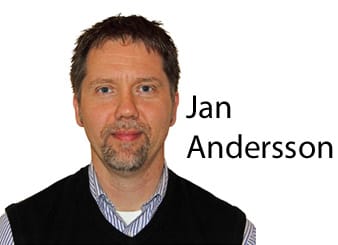
This past month I attended the first “Hydronics Round Table” put on by ACCA’s new Radiant & Hydronics Council. The very next week, I attended the annual meeting for the new RPA (Radiant Professionals Alliance) led by IAPMO. Since I’m good friends with the folks heading up both, I thought I’d better get a first-hand look to what they are up to. After the slow decline and eventual end of the Radiant Panel Association, there seemed to be a definite void for the serious radiant zealots to have an event that gives them reason to hang out with like-minded individuals to share war stories, projects and ideas. What would happen now? Well, the buzz around the industry was that there is only really room for one organization in the radiant industry. And now, there are two of them, seemingly competing for the same slot. Which one would it be? Based on what I had heard, quite frankly, I wasn’t sure they were wrong. I have always enjoyed these events, and as a manufacturer in the radiant industry, getting the market perspective from these guys is worth its weight in gold. Plus, they are a great bunch to hang out with.
I do have to say that for as much as I enjoy these events and the people, there really aren’t many new faces that show up. I guess that’s the $64,000 question. Why? How do we make these events more interesting and appealing to a larger group of contractors? There is a core group that will in some way always show up, and that’s great! But, there is only so much preaching to choir you can do, unless, of course, that’s all you want to do. We are all business people and our jobs and livelihood depend on selling stuff, hopefully at an adequate profit. After almost 25 years of manufacturers, distributors and contractors pounding the pavement to try to get the radiant market share to grow above the puny 3-4%, there are still some great challenges. I believe that all the current radiant soldiers out there would welcome a rising tide to lift all boats. So how do we grow the overall market for radiant systems and not just fight for market share within our own little slice? This is where I see some light at the end of the tunnel with both of these organizations. I believe that there really is room for both organizations! Of course, I have to say that my current opinion is based on what I have seen so far from both sides.
So, here is how I see it.
IAPMO’s new RPA: The new RPA presented that they are working on developing new codes and standards specifically for the hydronic systems whether radiant, solar, geothermal and so on, along with some other efforts. That’s good news. As far as I know, there are no official codes or standards that states and cities can adopt specifically covering these systems. I believe that this effort will greatly help inspectors to do a better job policing the quality of the installations out there. This hopefully will bring the level of workmanship up. I know there are a lot of great installers out there. But unfortunately, I hear all too often of guys making a living on fixing faulty systems. Worst part is, what is the view of the homeowner of radiant floor heating after a disaster like that. They may not ever want to deal with it again, and will tell all their friends that radiant floors suck. This doesn’t help us. I’m not in favor of the government getting into our lives more than they need to, but in this case, I think it will help the industry. Just look at Europe where they call installers of these kinds of systems “Technicians.” Because there is a minimum level of expected quality and efficiency that the systems need to meet, you have to be well trained to be able meet these needs. Putting these standards in place will also allow the trade schools to have a base for developing a solid and consistent curriculum for hydronics on a broader scale. Lastly, the fact that they have the resources to pull this off, and that they have people on Capitol Hill full time, looking out for the best interests of our industry, gives in my mind, the new RPA a higher chance of succeeding as long as they stay the course as presented.
ACCA’s new Radiant & Hydronics Council: ACCA with its large HVAC contractor base has unique and very important opportunity to bring the message of the new Radiant & Hydronics Council’s efforts directly to their membership base. These are the installers we want to fold into the mix as far as I see it. They currently install 90% of the heating systems out there, but the majority of them do not know enough to offer or install hydronic systems. I know that for some installers that currently have a monopoly on the radiant and hydronic system installation in their area, may not welcome additional competition. But I must say that I have not yet heard any of the more serious hydronic installers reject this idea.
So, from where I’m sitting, both of these organizations will not compete, but could rather fight our battle on two fronts. There are, of course, many other important areas to improve on such as educating builders and end users better. But I think that if we do a good job educating a bigger contractor base, we will then have more contractors able to talk about these systems more intelligently.
For now, I think we are on the right track. We’ll see how it turns out.
Jan is a native of Sweden where he lived until he was 18 years old. He has been involved in the radiant industry now for almost 23 years in a wide variety of positions such as warehouse clerk, radiant designer, large project design coordinator, design service manager, manufacturer’s rep, national sales manager, product manager, and currently, general manager at MrPEX Systems. His passion to bring radiant panel heating to mainstream construction has been the key to his own success.
The views of this blogger do not necessarily reflect the views of Mechanical-Hub. Our goal is to bring news and information that is relevant to the industry. You are encouraged to continue the conversation by adding your comment below. As always, please be respectful of the author and their viewpoint of the subject at hand.
~Thank You, Mechanical-Hub




Join the conversation: